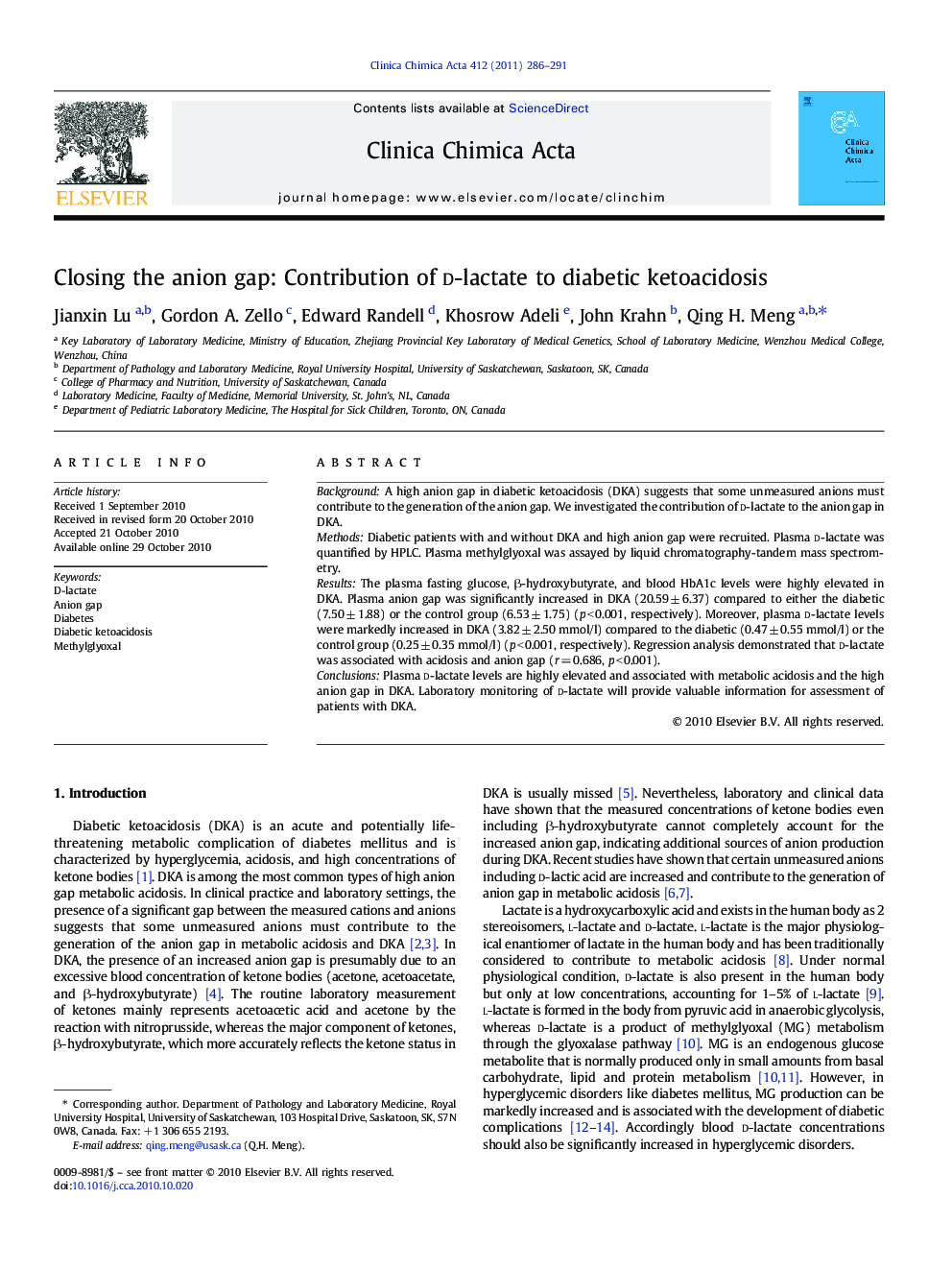| Article ID | Journal | Published Year | Pages | File Type |
|---|---|---|---|---|
| 1966530 | Clinica Chimica Acta | 2011 | 6 Pages |
BackgroundA high anion gap in diabetic ketoacidosis (DKA) suggests that some unmeasured anions must contribute to the generation of the anion gap. We investigated the contribution of d-lactate to the anion gap in DKA.MethodsDiabetic patients with and without DKA and high anion gap were recruited. Plasma d-lactate was quantified by HPLC. Plasma methylglyoxal was assayed by liquid chromatography-tandem mass spectrometry.ResultsThe plasma fasting glucose, β-hydroxybutyrate, and blood HbA1c levels were highly elevated in DKA. Plasma anion gap was significantly increased in DKA (20.59 ± 6.37) compared to either the diabetic (7.50 ± 1.88) or the control group (6.53 ± 1.75) (p < 0.001, respectively). Moreover, plasma d-lactate levels were markedly increased in DKA (3.82 ± 2.50 mmol/l) compared to the diabetic (0.47 ± 0.55 mmol/l) or the control group (0.25 ± 0.35 mmol/l) (p < 0.001, respectively). Regression analysis demonstrated that d-lactate was associated with acidosis and anion gap (r = 0.686, p < 0.001).ConclusionsPlasma d-lactate levels are highly elevated and associated with metabolic acidosis and the high anion gap in DKA. Laboratory monitoring of d-lactate will provide valuable information for assessment of patients with DKA.
